Key takeaways:
- Understanding the emotional impact of music and events is crucial for creating a resonant experience for attendees.
- Real-time emotional assessment allows for dynamic adjustments to enhance audience engagement and connection during events.
- Utilizing various tools, such as sentiment analysis software and direct feedback, helps gauge audience feelings and inform future event planning.
- Personal reflections on audience responses provide deeper insights into how music fosters connections and can facilitate emotional healing.
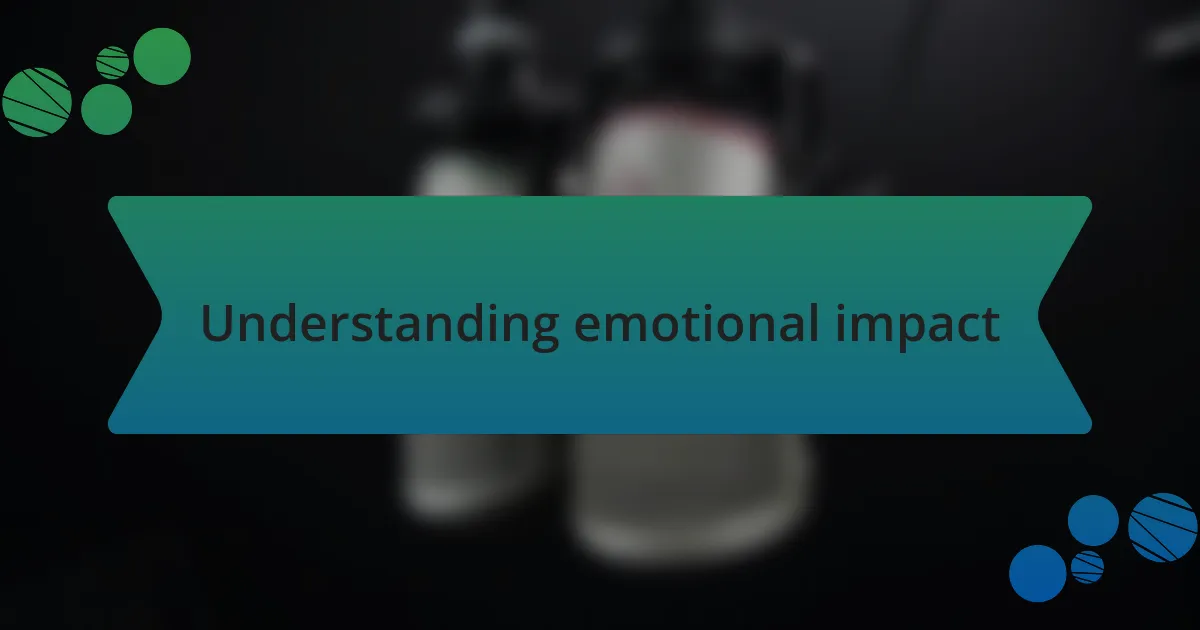
Understanding emotional impact
Understanding the emotional impact of my events is crucial in shaping the overall experience for attendees. I’ve often found that the energy in a room can shift dramatically with just a subtle change in the music or lighting. Have you ever noticed how certain tracks can evoke specific memories or feelings, perhaps transporting you back in time to a moment that feels both distant and vivid?
As I think back to my early days in organizing events, one performance stands out. A DJ dropped a track that shifted the mood from celebration to introspection within moments. The emotions were palpable, almost like a collective sigh of relief among the crowd. It reinforced my belief that understanding these emotional nuances is essential; it’s about crafting a journey that resonates on a deeper level with the audience.
Moreover, I often ask myself, how can I curate an experience that not only entertains but also connects? Emotional impact isn’t just about the highs of the bass drops; it’s the lows and the transitions that resonate with people. I strive to create moments of catharsis, where the audience can let go and feel alive. This exploration of emotional dynamics continues to fuel my passion for electronic music and event production.
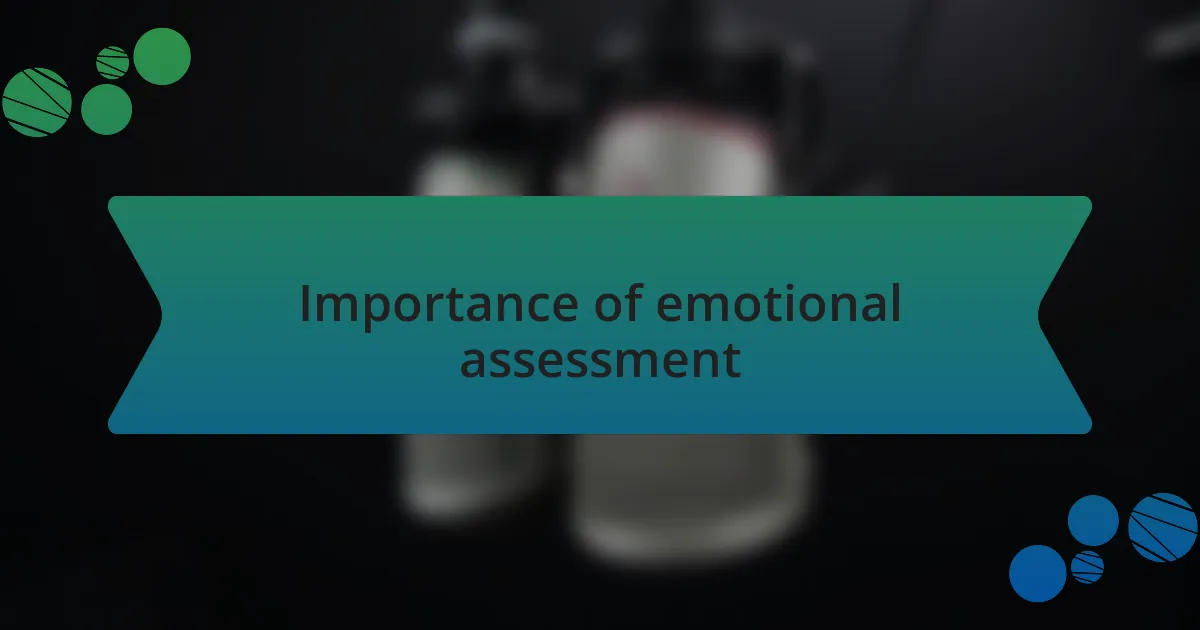
Importance of emotional assessment
Assessing the emotional impact of my events is more than just a step in planning; it’s a fundamental pillar that shapes the entire experience. I remember a night when the audience was fully engaged, dancing in sync with the beat, yet I noticed a shift when a more reflective track played. That moment reminded me how critical it is to monitor emotional responses, as they often guide the flow of the night.
In my experience, understanding these emotional undercurrents allows me to adjust the vibe in real-time. At one event, I shifted from a high-energy atmosphere to something more melodic, observing how the crowd began to sway and connect with each other. This instinctive response underscores the importance of emotional assessment as a tool for enhancing the communal experience of live music.
Why does it matter so much? Because the emotional journey of an event doesn’t just stay within the venue; it lingers on in memories and feelings long after the last track fades. I often think back to events where emotions ran high, leaving attendees feeling more connected to each other and to the music. Each assessment contributes to the uniqueness of the experience—and isn’t that what we all strive for in the electrifying space of electronic music?
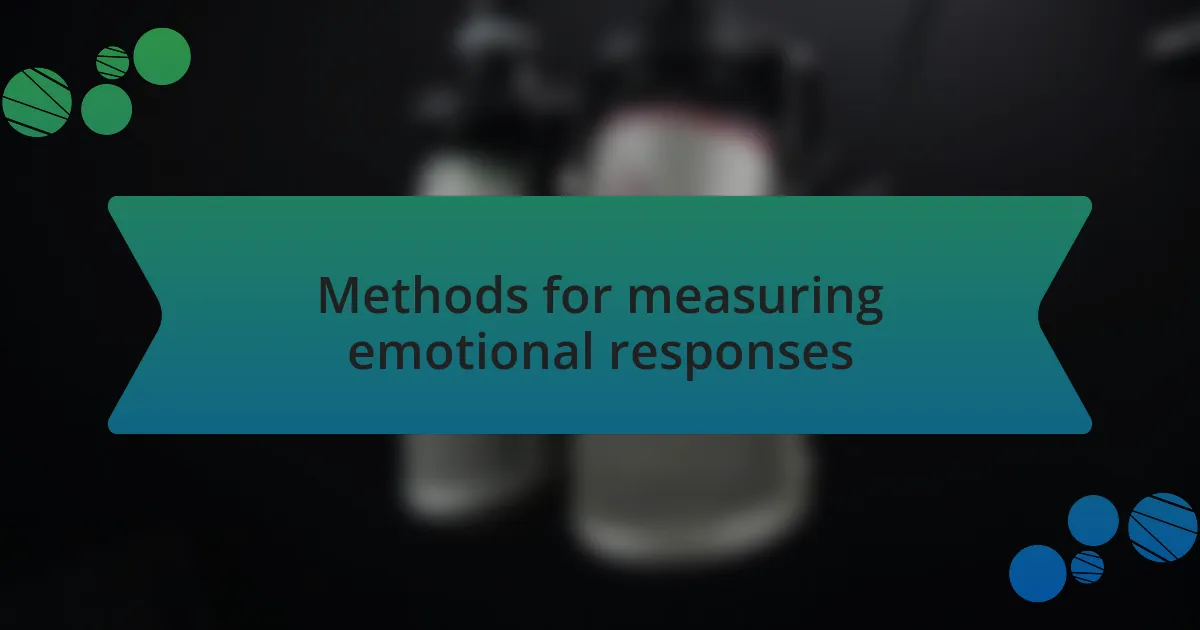
Methods for measuring emotional responses
One effective method I use to gauge emotional responses is through direct audience interaction. During my events, I often engage with attendees, asking them about their feelings and reactions to specific tracks. This real-time feedback is invaluable; it not only helps me understand the crowd’s energy but also deepens the connection between the audience and the music we’re experiencing together.
I’ve found that monitoring social media reactions can be just as enlightening. After an event, I sift through posts and comments to see how people expressed their emotions online. For example, at a recent festival, I noted an overwhelming number of comments about how a particular moment left attendees feeling uplifted. It’s fascinating to see how a collective shared experience translates into personal reflections and voices, illustrating the power of the emotional journey crafted through sound.
Furthermore, utilizing technology such as wearable devices to track physiological responses could provide even deeper insights. Imagine having data on heart rates or movement patterns during particular sets; it’s a truly exciting prospect. Wouldn’t it be amazing to correlate this data with the types of tracks played? Exploring these innovative approaches could transform how we assess and respond to emotional experiences in events.
![]()
Tools for tracking audience feelings
One tool I’ve found particularly effective for tracking audience feelings is sentiment analysis software. After shows, I often dive into the data provided by these platforms, which scan social media and reviews to gauge the overall mood surrounding my events. For instance, after a recent gig, I was surprised to see a spike in positive sentiments tagged with specific tracks, revealing which moment truly resonated with the audience. Can you imagine the insights I gained about my setlist purely from this data?
Surveys also play a crucial role in understanding audience emotions. I regularly send out post-event surveys, asking attendees specific questions about their experiences. I recall one time, I asked what moment of the night made them feel most alive, and the responses were overwhelming. People described vivid moments of connection not just with the music, but with each other. This shows how emotions intertwine and how these insights can guide future events.
Lastly, there’s something to be said for simple yet effective tools, like the humble feedback wall. At one event, I set up a space for attendees to write their feelings or draw their experiences. The raw, unfiltered emotions expressed there were surprisingly powerful. It’s a fantastic reminder that while technology is valuable, there is immense worth in tangible, personal expressions of sentiment. Have you ever considered how an interactive element like this could deepen audience engagement?
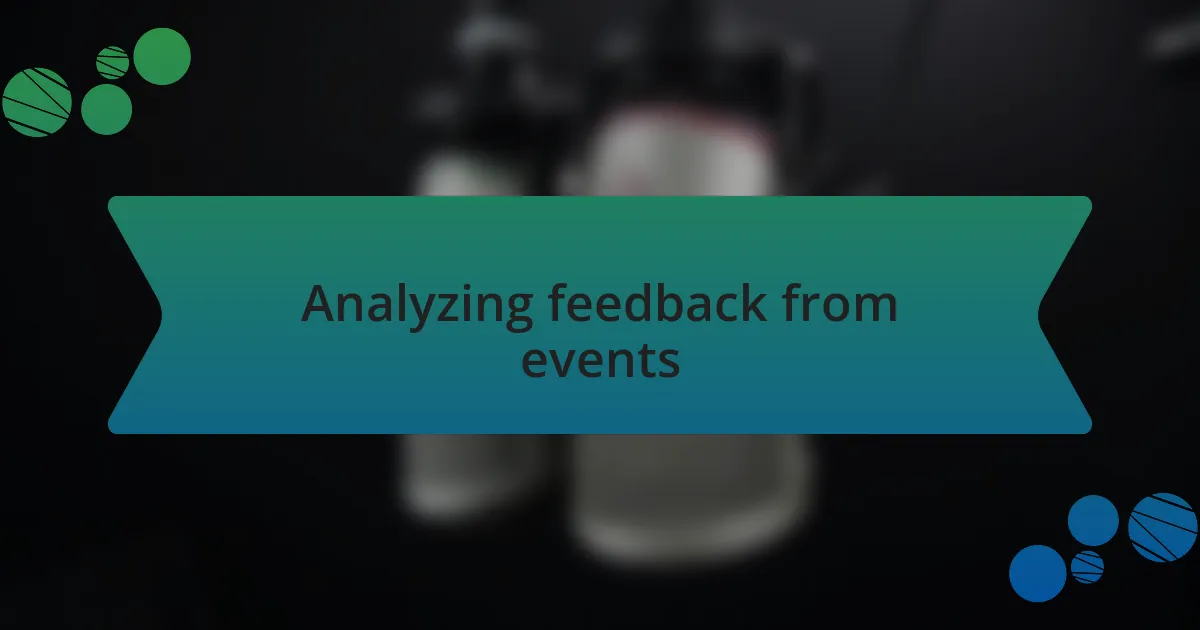
Analyzing feedback from events
Analyzing feedback from events is a critical step in understanding the emotional responses of my audience. I recall one particular event where I carefully studied the feedback collected. Some attendees mentioned how a specific moment during the set brought them to tears, a revelation that made me realize the profound connection music can create. This kind of insight reinforces the idea that every note played can evoke a cascade of emotions—how often do we overlook such powerful reactions in our planning?
In my experience, sifting through the qualitative feedback can be just as enlightening as the quantitative data. I once read a comment where someone described feeling “transported to another world” during a DJ’s performance. It reminded me of how a single track can totally shift the atmosphere—have you ever been lost in a song like that? This type of feedback pushes me to think differently about my selection and timing of tracks, proving that understanding those emotional peaks and valleys can enhance future events.
Moreover, I place great value on conversations with attendees right after shows. Engaging in candid discussions has led me to discover how my events impact individuals, beyond mere enjoyment. I remember chatting with a couple who felt a renewed sense of connection to each other during a song; their eyes sparkled with shared memories. It’s moments like these that shape my creative vision—how can I continue to foster such intimacy through my artistry?
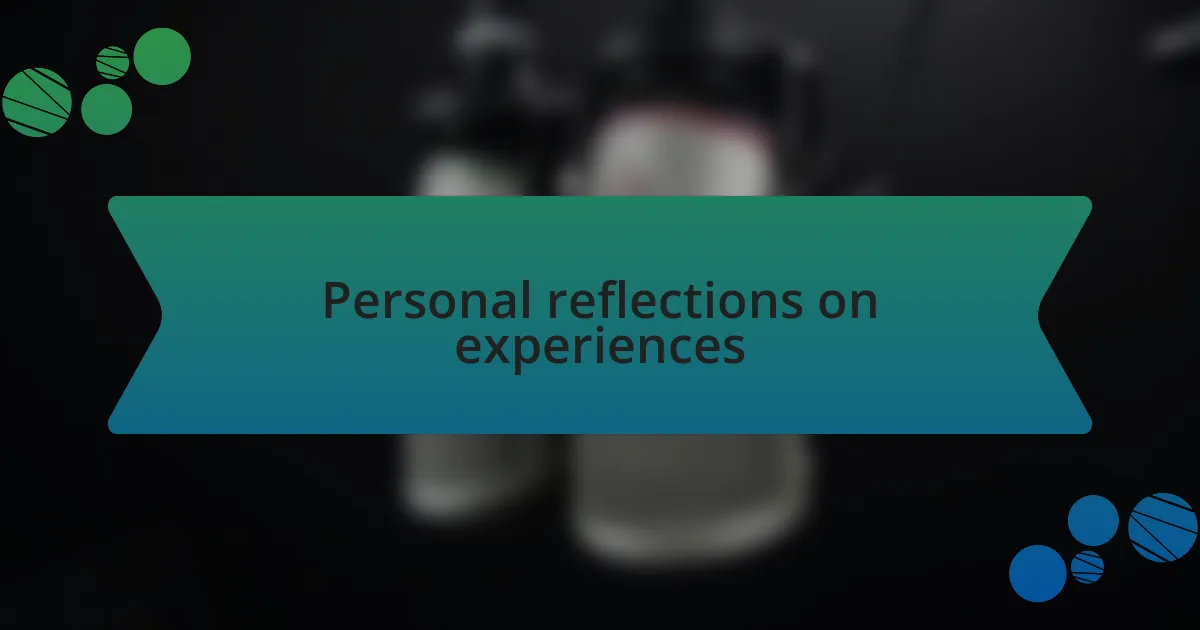
Personal reflections on experiences
Reflecting on my experiences, I often find that certain moments linger in my mind, resonating long after the events have ended. At one festival, I witnessed a crowd unite during a mesmerizing bass drop; it struck me how music can dissolve barriers between people. Have you ever felt that electric energy sweep through a room, as if everyone is sharing the same heartbeat?
There was an intimate house party where I played a deep house track. It was fascinating to notice how a simple melody could change the vibe entirely. I spotted someone swaying with a smile, lost in thought—what stories were playing out in their mind as they danced? This reminded me that music often serves as a soundtrack to our lives, evoking memories and emotions we may not even realize are present.
Sometimes, I reflect on the quieter moments too. After a recent event, a friend shared how a specific song helped her process feelings of loneliness. The way she spoke about her experience brought me a new level of understanding—how can I create spaces that not only celebrate music but also foster healing? Such reflections push me to rethink my role as a creator and the emotional landscapes I can craft through sound.